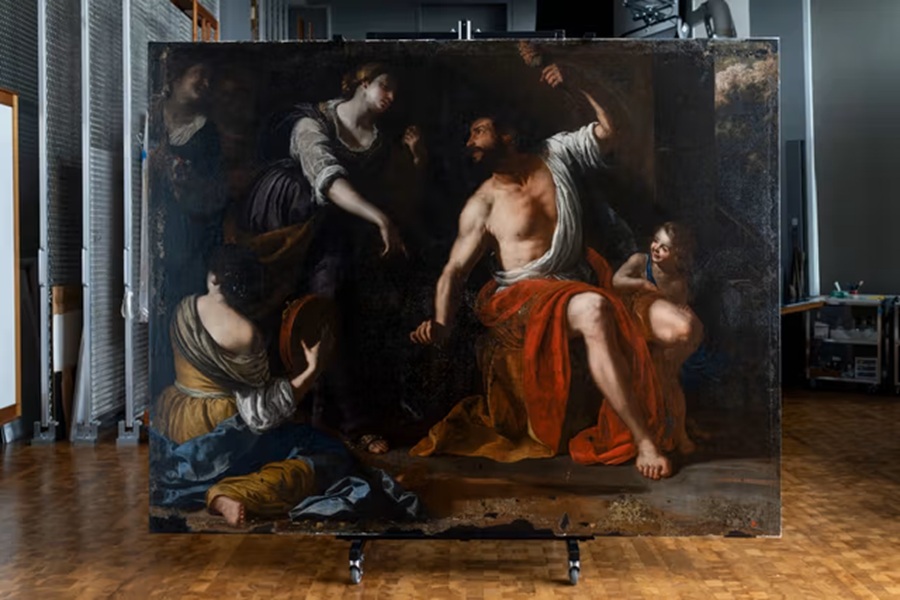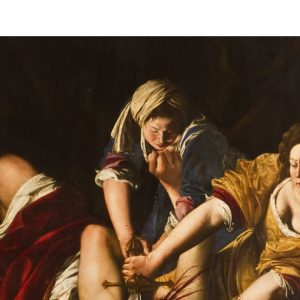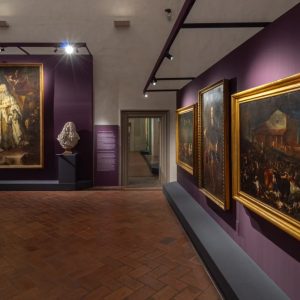A never-before-seen Artemisia Gentileschi painting is set to make its public debut following a remarkable restoration. Hercules and Omphale will go on display at the J. Paul Getty Museum in Los Angeles from 10 June to 14 September.
The Gentileschi painting is believed to have been created in the 1630s during Gentileschi’s time in Naples. The painting is quintessential Gentileschi, renowned for her portrayals of donne forti – strong women -drawn from biblical and classical mythology.
Here, she depicts a pivotal episode from the myth of Hercules and Omphale, in which the hero, punished for murder, is forced by the Delphic oracle to serve as a slave to the Queen of Lydia. Gentileschi presents Hercules not as a symbol of brute strength, but as physically and emotionally exposed. He sits half-naked, dwarfed by the commanding figure of Omphale, while Cupid smiles beside him. The inversion of traditional gender roles is clear. Omphale wears Hercules’s lion skin and wields his club, while he holds a spindle, an object long associated with women’s domestic labour.
The artwork was severely damaged in the 2020 Beirut port explosion, which killed over 200 people and devastated much of the Lebanese capital. The blast tore through the historic Sursock Palace, where the painting was housed. Identified shortly after the explosion by Lebanese art historian Gregory Buchakjian, the painting arrived at the Getty in 2022 in a state of near-total ruin.
Also read: On this day in history: Artemisia Gentileschi born
Restoration was like “a giant jigsaw puzzle”
Getty chief conservator Ulrich Birkmaier, who led the restoration alongside Italian expert Matteo Rossi Doria, described the project as one of the most difficult of his career. “It was like assembling a giant jigsaw puzzle,” Birkmaier said. “Little by little, the painting came back to life.”
The process involved removing shards of glass, plaster, and other debris from the canvas, followed by delicate removal of varnish and past restoration efforts. Birkmaier then rebuilt large sections of lost paint to revive Gentileschi’s original palette.
“This is a momentous discovery,” said Getty director Timothy Potts. “We are honoured to restore and exhibit this powerful work alongside Gentileschi’s other portrayals of formidable women.”
After its run in Los Angeles, Hercules and Omphale will travel to the Columbus Museum of Art in Ohio. It will later return to the Getty on long-term loan, before finally heading back to Beirut’s Sursock Palace.





